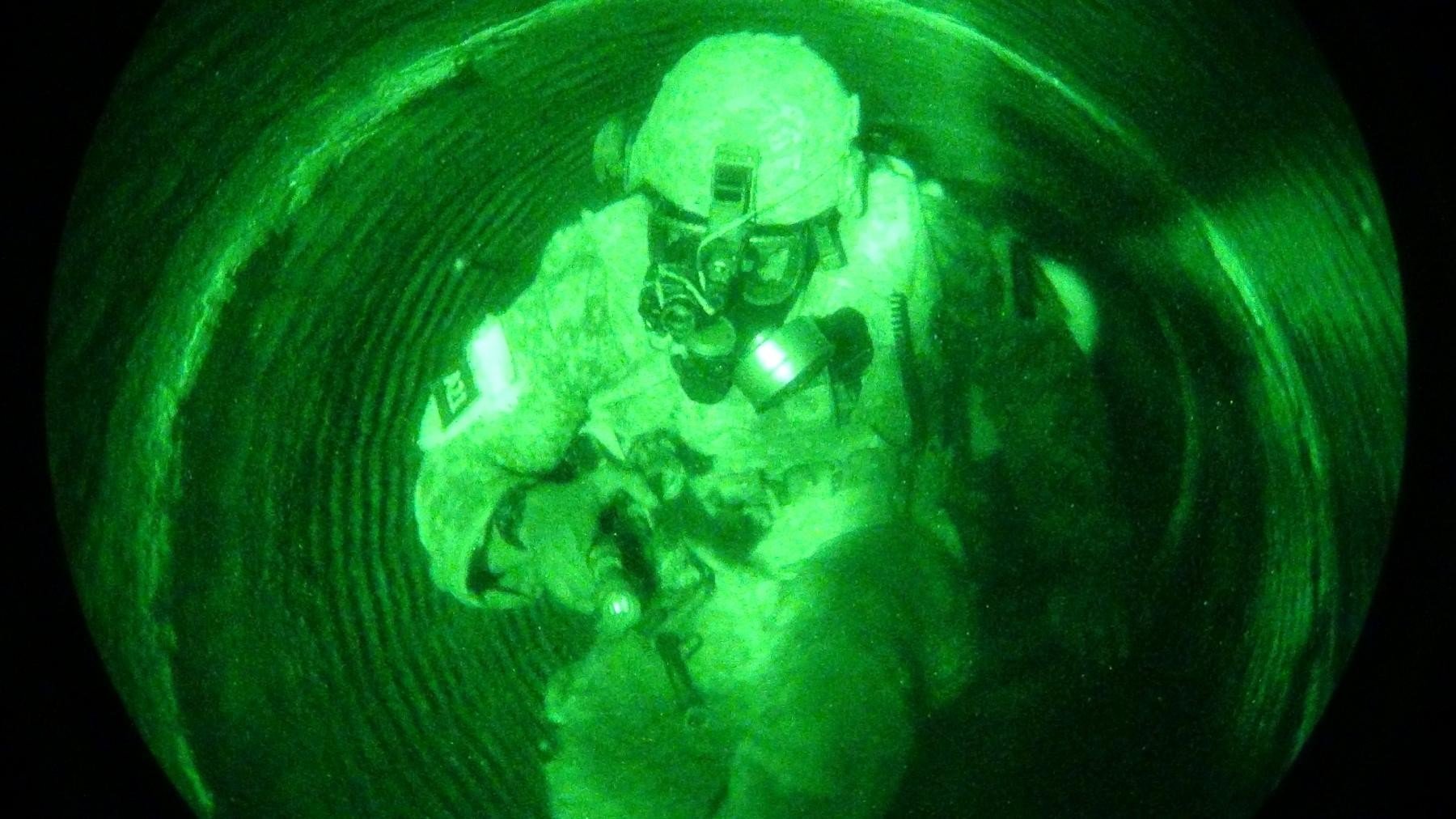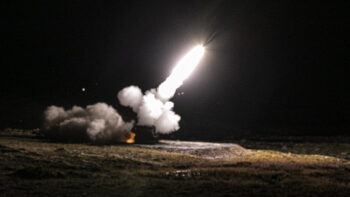
An Army soldier crawls through a tunnel during urban warfare training. (Army photo)
This report was updated 8/2/22 at 5:24 pm ET to reflect updated information provided by the official cited below following publication of the original story, including the removal of unconfirmed estimations of the cuts’ specific impact.
WASHINGTON: As Congress works through the messy process of building next year’s Pentagon budget, there are concerns within the Army that cuts proposed by Senate appropriators to network and radio modernization upgrades will impact the service’s ability to field key components of its next capability set, an Army official told Breaking Defense.
The cuts will specifically impact fielding efforts for Capability Set 23, including the Integrated Tactical Network (ITN), upgrades to At The Halt satellite communications and modernization radio systems, according to the official, who spoke on the condition of anonymity. Per that official, the Army’s assessment is that such a cut could expose units to operating at risk with legacy communications equipment and delay much-needed communications upgrades.
Capability Set 23 is the second “tool kit” of applications and technology delivered every two years by the Army designed to modernize network capabilities across the service. Its focus is on capacity, resiliency and convergence of the network, providing a more robust transport layer to support other modernization priorities. The set includes things like low- and mid-earth orbit communications, introduces hardened radio capabilities and sets conditions for Joint-All Domain Operations.
Notably, the Senate Appropriations Committee is the only committee to have made funding cuts for the various network and radio upgrades, and it’s unclear if the cuts will remain in legislation eventually signed by President Joe Biden. The committee noted the cuts were made either due to unjustified requests, cost overestimations or previously funded efforts.
RELATED: Army CIO: FY23 Is ‘Year Of Inflection’ For Digital Transformation
The committee in its fiscal 2023 chairman’s mark reduced funding for commercial off-the-shelf (COTS) information technology communications equipment, including a $59.96 million reduction for ITN line-of-sight radios.
The cut will impact the Army’s ability to procure the ITN line-of-sight radios and other equipment used to provide network interoperability for Capability Set 23-designed units, which includes up to four brigade combat teams scheduled to field in FY24, according to the official.
Additionally, radio integration of armored brigade combat teams or Stryker brigade combat teams would not be funded in FY23 in the appropriators’ markup, which will impact network design for Capability Set 25 and beyond, the official added.
The committee also cut funding by a total of $19.8 million for the Combat Net Radio, which is an upgraded and low-cost tactical radio replacement for the SINCGARS radio.
The radio “is a critical component of the Army’s SINCGARS radio modernization strategy to remove legacy and cyber vulnerable radios from inventory,” the official said.
The committee would also reduce funding by $77.36 million for the Tactical Network Technology Mod In Service (TNT MIS), which funds ongoing modernization for current Army network capabilities, down from the Army’s initial request of $382 million to $304.64 million.
Modernization upgrades under the effort are scheduled based on unit availability and prioritization over several years and the mark defers network upgrades to the current At-The-Halt capabilities, like the Network Integration Technology Enhancement (NITE), widely fielded across Army and Army National Guard formations, the official said.
NITE is a multi-year ongoing effort to refresh the service’s Tactical Network Transport At The Halt across equipment to maintain security, interoperability with current systems and resilience against current and emerging threats.
The project major impact of the mark would defer fielding to 11 units, according to the official.
“The mark also impacts the ability to conduct systems engineering and integration work on prototype solutions for SATCOM Obsolescence for Tactical Hub Node delayed fielding,” the official added.
The Army in June started conducting a two-phased operational assessment with Capability Set 23 with the 2nd Cavalry Regiment in Europe in order to get real time operational feedback to help the service decide what to field. The next step for the service with was experimenting with US Army Pacific for cloud, data and mission command applications this summer and fall.
Capability Set 21 as of last month was already 70% fielded and units deployed in Europe to support NATO are currently using elements of the set. The Army is also working on developing capability sets 25 and 27 and has began targeting technologies for Capability Set 29.






















